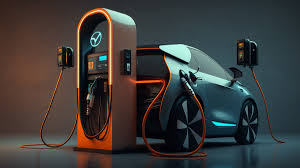PM Modi Launches e-DRIVE Scheme to Boost Electric Vehicle Adoption
In a major push towards permanent transportation, Prime Minister Narendra Modi today launched the e-drive (electric drive for renewable and innovative vehicle ecosystem) scheme to promote the adoption of electric vehicles (EVS) across India. The initiative declared from the national capital tries to reduce the country’s dependence on fossil fuels, curb pollution and accelerate infection of cleaner mobility solutions.
Major objectives of the e-drive scheme
The e-drive scheme is designed to make electric vehicles more accessible and attractive to Indian consumers. Its primary goals include:
- Encouraging the use of electric cars, scooters, bikes and buses.
- Supporting charging infrastructure development in cities and on highways.
- EV buyers offer financial encouragement and subsidies.
- Power dynamics and promotion of research and development in battery technology.
The government hopes that by 2030, India can achieve a significant change towards electrical mobility, reduce carbon emissions and contribute to climate change goals.
Encouragement for consumers
Under the e-Drive scheme, individuals and businesses purchasing electric vehicles will get a direct subsidy by reducing the initial cost of EVS. Some major incentives include:
- For electric cars. Subsidy up to 1.5 lakhs.
- Incentives for electric two-wheelers and three-wheelers from ₹ 10,000 to ₹ 50,000.
- Tax profit on loan for EV procurement.
- The registration fee and road taxes were reduced in the participating states.
The scheme also emphasizes creating a subsidiary ecosystem, including easy access to loans, insurance and maintenance services for EV owners.
Charging Infrastructure Expansion
One of the key challenges for EV adoption in India has been charging infrastructure. To address this, e-DRIVE aims to install thousands of fast-charging stations across urban and rural areas. These stations will ensure that EV owners can travel long distances without worrying about charging facilities.
PM Modi highlighted that the government plans to collaborate with private companies and startups to scale up the charging network efficiently. Public-private partnerships will play a crucial role in creating a reliable and extensive charging infrastructure nationwide.
Environmental Benefits
The e-DRIVE scheme is expected to have a significant impact on the environment. By replacing petrol and diesel vehicles with electric alternatives, India can reduce air pollution in major cities and greenhouse gas emissions. Experts believe that widespread adoption of EVs could reduce carbon emissions by millions of tons annually, contributing to India’s commitments under the Paris Climate Agreement.
Dr. Ritu Sharma, an environmental expert, said, “Electric mobility is the future of transportation. With schemes like e-DRIVE, India is taking a big step toward cleaner air, lower emissions, and a sustainable economy.”
Boosting Local Manufacturing
The scheme also encourages domestic manufacturing of electric vehicles and batteries, supporting the government’s Make in India initiative. Companies producing EVs in India will receive incentives for research, development, and innovation. This is expected to generate employment opportunities and make India a hub for electric mobility technology.
Startups and established automobile manufacturers have welcomed the scheme, noting that it provides a clear roadmap for investment and growth in the EV sector.
PM Modi’s Vision for a Green India
Speaking at the launch event, PM Modi said, “Our vision is to make India a global leader in electric mobility. The e-DRIVE scheme is a step toward sustainable transportation, clean air, and a healthier environment for future generations. Every citizen has a role to play in adopting cleaner energy and reducing carbon footprints.”
He further added that the government will continue to work closely with state governments to ensure the smooth implementation of the scheme and to monitor progress regularly.
Public Reaction
The announcement has received widespread appreciation from citizens, environmentalists, and industry leaders. Social media platforms are abuzz with discussions about the benefits of electric vehicles, with many users sharing their plans to switch to EVs.
Industry experts believe that the scheme will not only increase EV adoption but also create a vibrant ecosystem for innovation in electric mobility, including battery technology, energy storage, and renewable energy integration.
Challenges Ahead
While the e-drive scheme is ambitious, experts take precautions that challenges remain. Strength, charging infrastructure, battery life and awareness are important factors that will determine the success of the program. However, with the strong focus and support of the government from the private sector, these challenges can be gradually removed.
Future approach
With the e-Drive scheme, India is expected to grow rapidly in adopting electric vehicles in the next decade. The government aims to create a permanent and self-sufficient EV ecosystem, reduce pollution, and encourage citizens to embrace cleaner and greener transport.
Experts said that by 2030, electric vehicles may become an important part of India’s motor vehicle market, which can change the way people travel by supporting India’s climate goals.
Conclusion
The e-drive scheme marked a milestone in a trip to India which is towards permanent transport. By promoting electric vehicles, expanding charging infrastructure and offering financial incentives, the government is making power dynamics more accessible and attractive for all citizens.
As India leads to a green future, initiatives like e-drive are expected to play an important role in reducing pollution, supporting local manufacturing and creating a cleaner environment for generations to come.
With public support, technological innovation and government commitment, the vision of an Electric India is gradually becoming a reality.
India drives a cleaner with an e-drive in the future!













